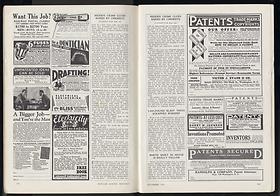Edwin W. Teale, "Hidden Crime Clues Bared by Chemist's Magic," Popular Science Monthly, November 1931
Many mid-20th-century prognosticators were excited about the new forensic scientific methods made possible by advances in chemical analysis. According to Teale, "The number of…spectacular exposés credited to chemistry in all fields of crime detection is constantly increasing."
Popular Science Magazine
Time4Media
Image 6 of 10
Utopian forensics
In the 19th and 20th centuries, glowing newspaper and magazine accounts of forensic technologies, real and imaginary, fueled public support for scientific crime detection. Edwin W. Teale's series of illustrated articles, published in Popular Science Monthly in 1931, conveys some of the enthusiasm for scientific crime detection. "Working slowly, painstakingly, utilizing every branch of science at hand," Teale rhapsodizes, "modern man-hunters are arriving at astonishing solutions in baffling crimes. Their work is analytical, methodical; but their results are amazing, magical."
